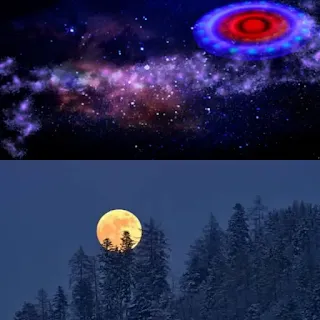Scientists have revealed how humans can communicate with aliens in outer space, and even stop intergalactic war if it actually occurs.
Academics have compiled the most comprehensive "extraterrestrial linguistics" to date, designed to ensure any contact with potential extraterrestrial life is friendly, and not seen as hostile.
A 2020 study claimed that there are about 36 “advanced” civilizations in the Milky Way alone, although identifying or contacting any of them has so far remained elusive.
A new volume has been brought together by 25 leading experts in linguistics, anthropology, animal communication, philosophy, computer science and biology, "to explore the potential nature of extraterrestrial intelligence with linguistic capabilities," the Times reported.
For decades, humanity has been investigating the possibility of other intelligent life in space, even sending out signals and communications in the hopes of one day getting something.
This included sending the Voyager spacecraft beyond our solar system, carrying a “golden record” complete with greetings in 54 languages, animal greeting sounds and even music.
The new research uses current understanding of human languages and the different ways animals communicate, with the aim of working out how to "decode intentional communication from another world."
Scientists have previously concluded that there is a small but possible chance of successful contact with alien life, but this paper highlights that huge steps are still needed on Earth to increase the chances of this happening.
This could include deciphering ancient languages that have not yet been translated, including Linear A, a writing system used by the Minoans on Crete until 1400 BC.
The researchers suggest sending a short, simple signal to “one million star systems once a day.”
They explain that communications will be slow, since it takes four years to reach the nearest star other than the Sun at the speed of light. Other life forms may have completely different body chemistry and communication methods that humans cannot understand.
The last "snow moon" of 2023 shines at the highest point in the sky
Astronomy enthusiasts are preparing to welcome the cold moon, the thirteenth and final full moon of 2023, on December 26, as it will be at the highest point in the night sky compared to any other full moon this year.
The cold moon, or snow moon, is the first full moon of winter, and the full moon will appear between December 25 and 27, but its peak full will be on Tuesday, December 26.
The moon will also appear bright and full on the day before and after peak fullness, and it will shine during dusk for three consecutive evenings from December 25 to 27, and it will be in the constellation Gemini.
The cold moon is the first full moon since the winter solstice in the northern hemisphere on December 22, announcing the official start of winter. According to NASA, “The full moon takes a high path across the sky because it is opposite the low sun, and therefore the moon will be above the horizon for a longer period than any full moon would have been at other times of the year.”
Therefore, while the sun is currently at its lowest point in the Northern Hemisphere's sky during the day, the full moon will be at its highest point in the sky.
On the night of the full moon and the night before, our moon will shine roughly between two bright stars in the east: Capella in the constellation Auriga, upper left, and the ever-exciting star Betelgeuse in the constellation Orion, lower right.
December's full moon earned the name Cold Moon (or Snow Moon), after the cold weather it brings with it, according to the Old Farmers' Almanac. Other names include: Long Night Moon (referring to the solstice and the longest night of the year), Frost Moon, Winter Maker Moon, and others.
The next full moon, which will be called the Wolf Moon, is expected to occur on January 25, and will be the first of 12 full moons in 2024.




Nice
ReplyDeleteGood
ReplyDeleteGood
ReplyDeleteGood
ReplyDeleteGood
ReplyDeleteWow! Interesting!
ReplyDelete